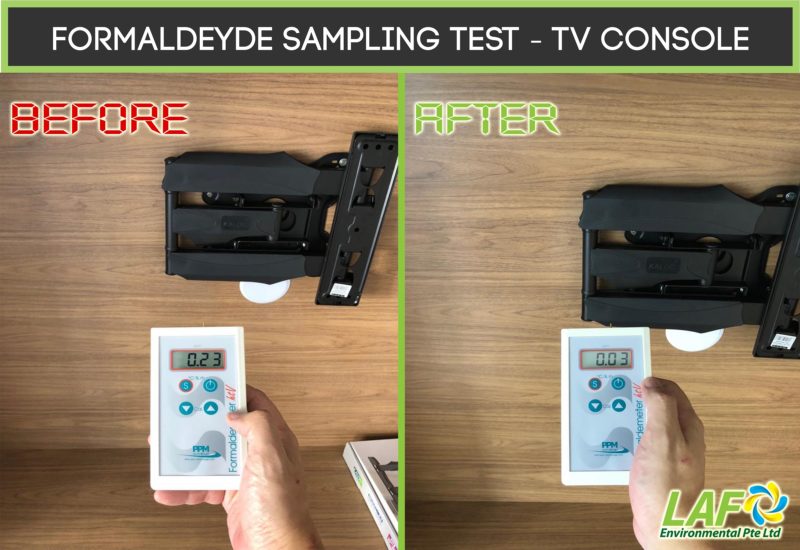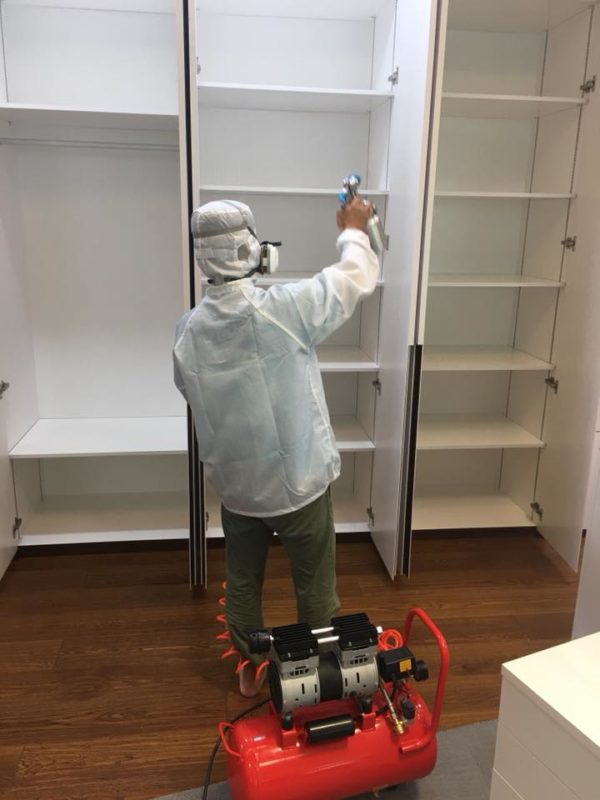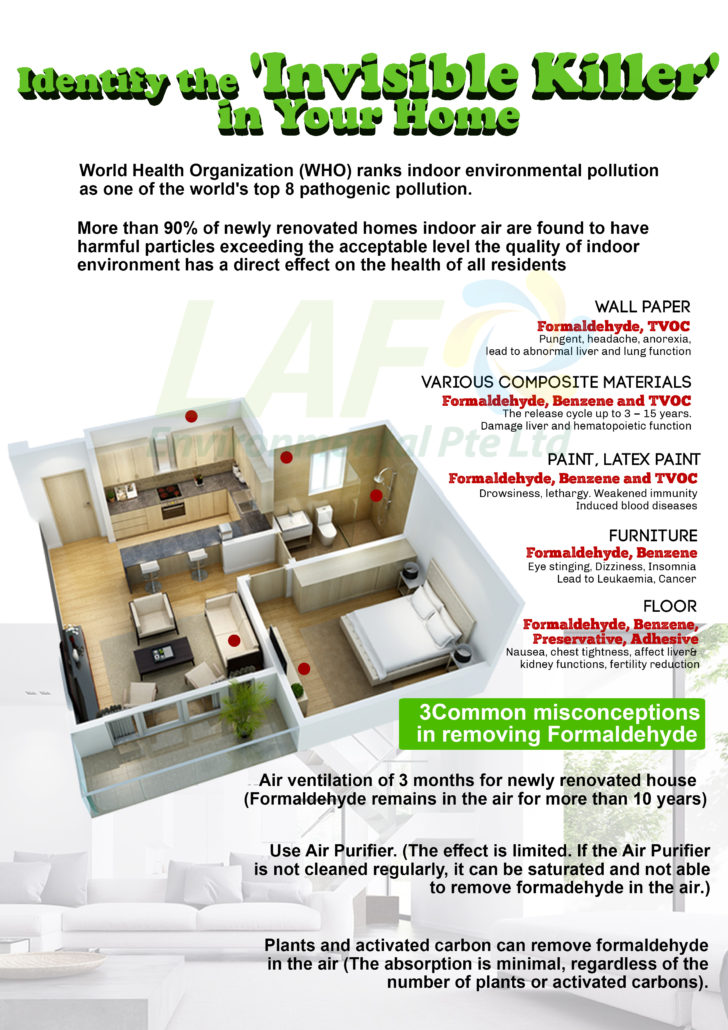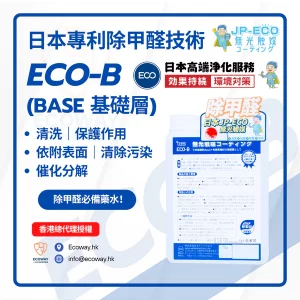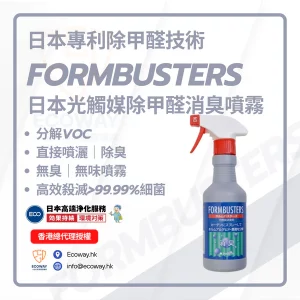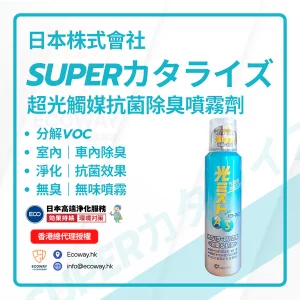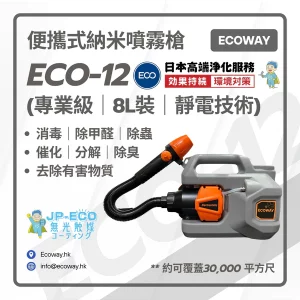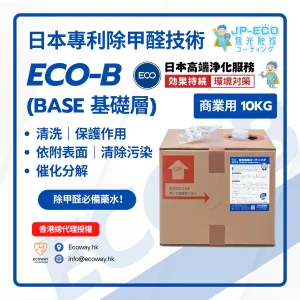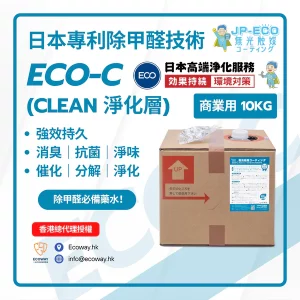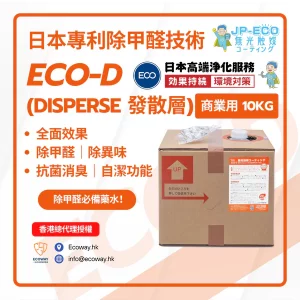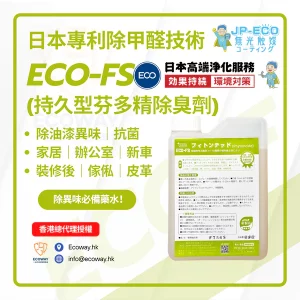VOC Removal Removal after Renovation
Formaldehyde(VOC) concentration or removal is analyzed using a graywolf & PPM Meter and we are one of the leading companies in Singapore for removal of VOC & Formaldehyde services
Benefits of Using Our Services
- Eliminate Toxic Contaminants & Pungent Odours instantly
- Inhibit VOC Gases from Outgassing from Wood Furnishings
- Activate Carbon for Highest VOC Gases (Formaldehyde) Remova
- 100% Natural Fragrance Gel Decomposes Organic Odour (VOC), Purifies Air
- Complimentary Formaldehyde and VOCs Test Report to compare the gas emission level before and after our service

What is Formaldehyde?
Formaldehyde is one of the Volatile Organic Compounds (VOCs). Formaldehyde is a colorless, flammable gas at room temperature, has a pungent, distinct odor, and may cause a burning sensation to the eyes, nose, and lungs at high concentrations.
The U.S. Environmental Protection Agency (EPA) has classified formaldehyde as a known human carcinogen. There is some evidence of asthma or asthma-like symptoms for children exposed to formaldehyde in homes.
Formaldehyde in Flooring & Wooden Materials
Laminate flooring is less expensive than solid wood, but there have been concerns that it emits formaldehyde. So Consumer Reports bought a variety of wood-based flooring products and ran lab tests over the past year.
It was a small study, but Consumer Reports did find that laminate and engineered wood had consistently higher levels of formaldehyde emissions compared with prefinished solid-wood samples that were tested.
If you’re putting in new flooring, Consumer Reports says prefinished solid-wood flooring is a better choice for reducing formaldehyde exposure. If you’ve had laminate or engineered-wood flooring for several years, there’s less cause for concern because formaldehyde is a volatile chemical that will dissipate over time.
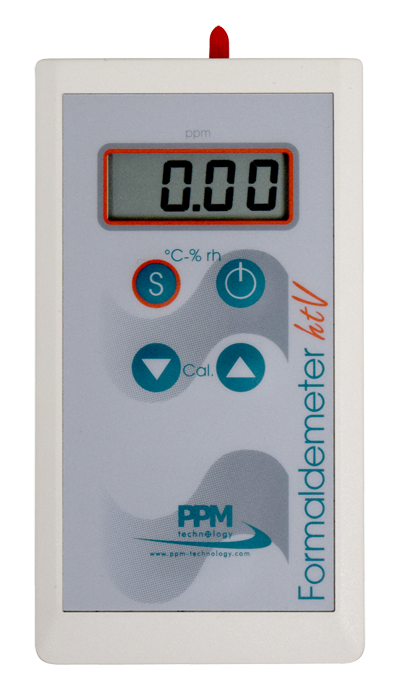
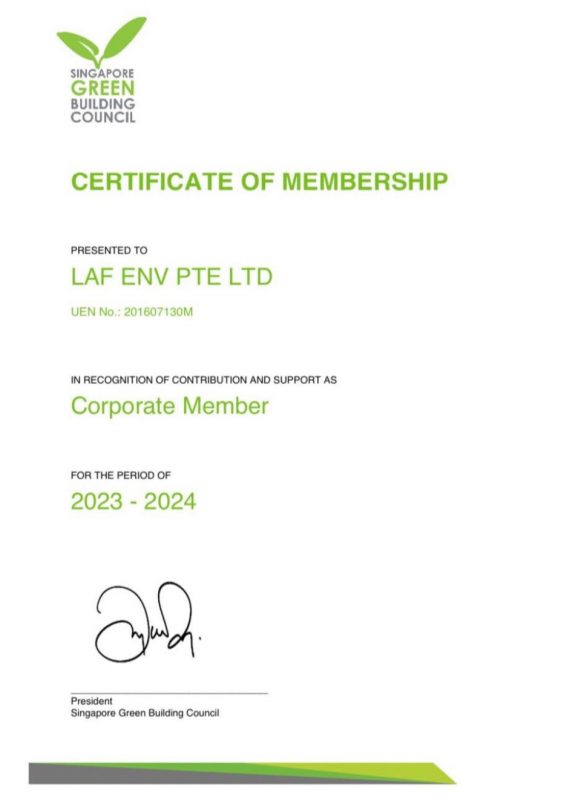
The problem is that lots of products can emit formaldehyde, especially when they’re new. Things like permanent-press fabric, upholstery, plywood, particleboard, paints, and cigarettes all can emit formaldehyde.
To lower formaldehyde levels, open windows to let in fresh air, wash permanent-press clothing and curtains before using them, choose wood furniture without formaldehyde-containing glues, and ban indoor smoking
Environmental Allergy
Allergy is a hypersensitivity disorder of the immune system. Most common environmental allergies occur to airborne allergens, such as dust mite, pollen, pet dander, mould spore, particulate matter or formaldehyde (VOC). Some individuals may respond to allergens which activate the production of IgE, leading to type I hypersensitivity. This will result in sniffling, sneezing, coughing, or itching or even an extreme inflammatory response.
Asthma and Allergy
Some main signs of allergy are itchiness, sneezing, inflamed or infected eczema, watering/reddening eyes, runny nose and clogging in the lungs. Allergens are tiny and light perfect for taking wing in the ducts and open air of spaces around your house. Indoor allergens like formaldehyde, dust mite, mold, particles or even volatile chemicals from conventional cleaners can accumulate in your air conditioners, curtains, mattresses, sofas and carpets . Allergens produced by house dust mites are among the most common triggers of asthma. Therefore, deep clean your home regularly is essential.
IgE and Asthma
Immunoglobulin E, or IgE, is a kind of antibody that plays an important role in the development of allergic asthma. Increased levels of IgE may result when you are exposed to allergens, such as dust mite, pollen, pet dander, mould spore, particulate matter or formaldehyde. Your body releases IgE, which then binds with several types of cells like basophils, lymphocytes & mast cells. This can then stimulate your immune system, cause your airways to become narrow and inflamed, and make your asthma symptoms worse.
